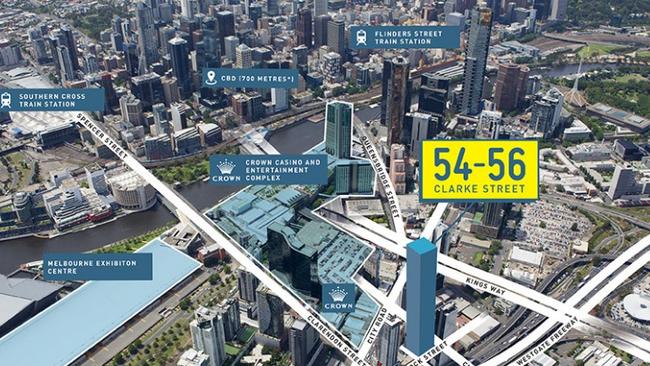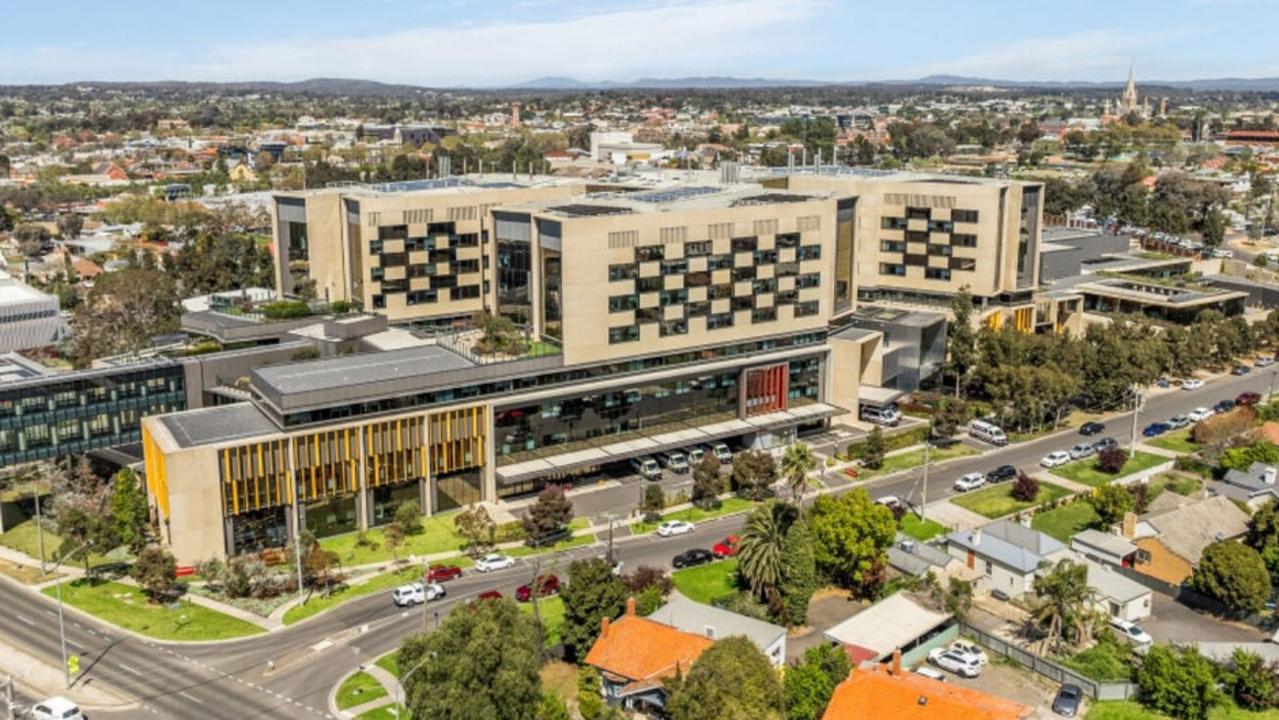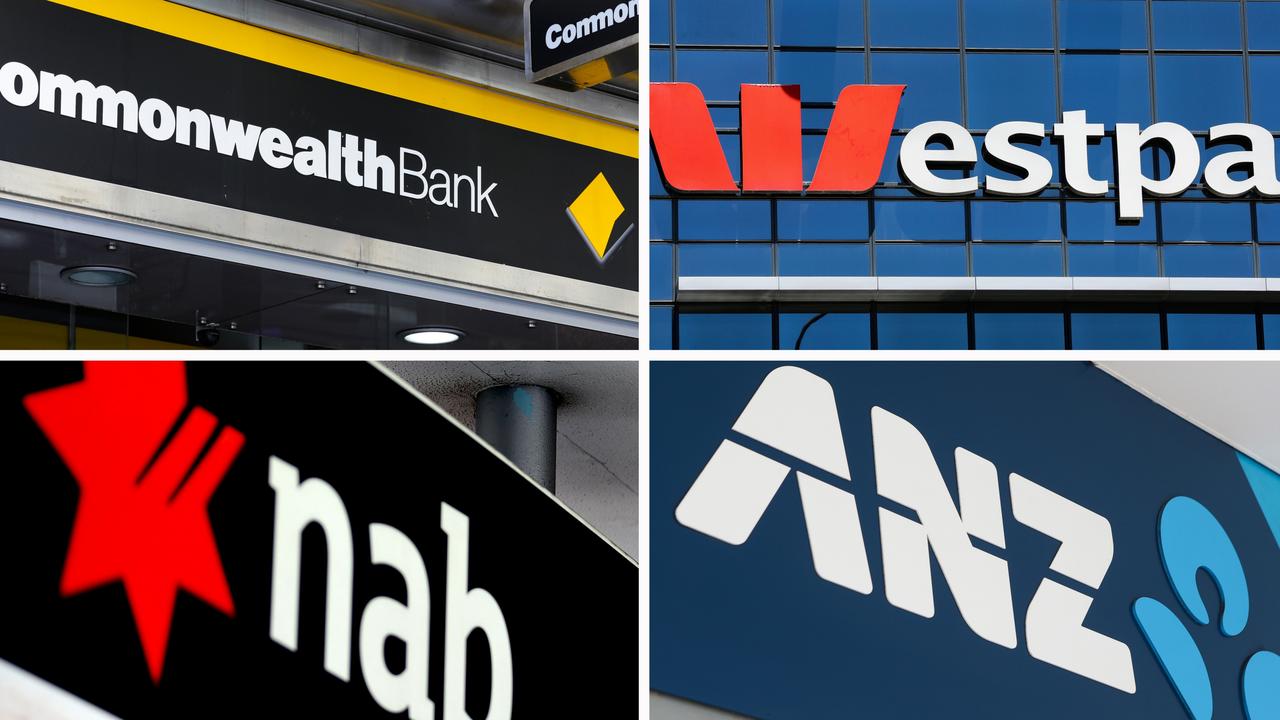Lean times hit skinny skyscraper as ‘mum-and-dad’ developers hit funding wall
PROPERTY developers are suddenly going broke, as fears about a nasty “domino effect” in the housing market spread.

IT MADE headlines as Melbourne’s “tallest, skinniest skyscraper”, but media buzz around 54 Clarke St in apartment-flooded Southbank wasn’t enough to save the developers from the rapidly turning property market.
Designed by Melbourne architects BKK, the 12m-wide, 73-storey, 256-unit development was hailed by then planning minister Matthew Guy when it got the nod in 2014.
“Yes, it’s skinny, yes it’s different, but we will have to do business differently in the next 20 years to how we have done it in the past, and this is a perfect example,” Mr Guy said at the time.
But as pre-sales drop and banks tighten lending for developers, a growing number of “mum-and-dad” apartment builders are being forced to abandon construction, experts have warned — sparking fears of a domino effect.
Like many others, the original private syndicate of developers behind 54 Clarke St were forced to walk away. The “Elysium” site went under the hammer earlier this month, billed as “Melbourne’s most incredible permit-approved site”.
“The opportunity to secure a prominent site in such a highly sought after location is extremely rare, especially when you consider the high-profile corner land holding and the fantastic permit in place for an iconic landmark apartment project,” the listing read.
Clinton Baxter of Savills Melbourne, who sold Clarke St at auction for nearly $20 million, said it was a “relatively tight funding landscape at the moment”.
“The developer who obtained the permit weren’t able to fund the construction of the project and decided to sell,” he said. “[The current environment] favours those developers with deep pockets, so there is a bit of a transition going on.”
With the buyer going through the final diligence phase, it’s likely the new developer will continue the construction as originally planned, but “typically it will be given a complete marketing makeover” and a new name, he said.

Mr Baxter recently sold a similar development at 18 Moray St in Southbank. The 440sq m site, which had approval for a 124-unit, 38-level high-rise designed by architects Fender Katsalidis, went for $8.8 million.
“The builders had obtained a permit, but weren’t in a position to sell the apartments and fund the development,” he said. “We sold that site to a Hong Kong-based developer who clearly has the financial wherewithal.”
South of the Melbourne CBD in the seaside suburb of Seaford, a 1951sq m site slated for a three-storey, 37-unit waterfront complex is also back on the market.
The project at 32-34 Nepean Highway was originally approved in 2014. “Now the permit has been approved, we have put everything in motion to hopefully begin works within the next six months and should take about 18 months,” development project manager Indunil Arambawela told the Frankston Standard Leader at the time.
“We will start selling units within the next four to six months. It’s a prime location on the waterfront with all the amenities around it. There is a lot of interest in the area.”
And in Dandenong in Melbourne’s east, a 1252sq m site approved for a five-storey, 31-unit development is also back on the market.
Both the Dandenong and Seaford sites are being sold by Colliers International, listed under instructions of insolvency specialist firm Cor Cordis Chartered Accountants.
The trend is noteworthy because it appears to gel with a scenario floated by investment firm CLSA earlier this month of a looming apartment “crisis”.
The broker predicted that a wave of defaults would force smaller developers into receivership, pushing down prices and potentially causing wider contagion that could lead to a recession.
NAB chief economist Alan Oster slammed CLSA’s report as “very poor analysis”, saying he “fundamentally” disagreed.
But Meriton founder Harry Triguboff, Australia’s richest man, has also sounded increasingly urgent warnings, telling news.com.au recently that a “very significant” number of Chinese buyers were walking away from apartment purchases.
Last week, Mr Triguboff told The Australian he would not be able to get 50 deposits on a new project, compared with 105 in the previous month. “We are sinking fast,” he said.
And earlier this month, Washington-based defence think tank ISSA warned of an imminent collapse in the Australian apartment market due to the local banks’ clampdown on Chinese investors.

Albert Callegher from ACM Finance, a specialist “last-mile” finance broker that provides top-up funding for property developers, said CLSA’s prediction was already coming true.
“The small to medium developers doing projects between $2 million and $20 million, they’re going broke,” he said. “I’ve seen about 30 in the last six months, compared with three for the same period last year.
“I’ve had one client say to me he’s got one developer with over 2000 apartments that can’t settle. We’re hearing it everywhere but it’s not making the news, because you don’t want an avalanche.”
Mr Callegher said recent tightening by banks had stopped the smaller “mum and dad developers”.
“During a property boom everyone seems to start developing fuelled by the news frenzy,” he said.
“As a result more and more people become instant developers or developers take on more projects with greater debt leverage. A lot of developers are just used to borrowing because they can’t help themselves. What’s going on is many go to vulture funds, borrowing to the hilt, don’t come out of it and away you go — mortgagee sales all over.”
Mr Callegher said it may not be a bad thing, as cashed-up developers were swooping in to make a profit on distressed sites.
“It’s a cleaning out of dead wood,” he said.
But he warned Melbourne may be facing another 2004 Docklands-style property bubble. “The developers simply sold the water view and position as the most fantastic, New York-inspired development in the universe,” he said.
“As a result, poor investors paid 25 per cent above market, the market corrected itself, and as a result a lot lost their homes through unscrupulous pricing structures. What’s happening now is the same as the Docklands. The last three years it’s been exuberant buying.”
It comes as latest figures from property research firm CoreLogic show developers appear undeterred by a potential oversupply and settlement risk for off-the-plan apartments, with a near-record high number of dwelling approvals in July 2016.
CoreLogic research analyst Cameron Kusher said the 17,380 capital city dwelling approvals was the highest number since October 2015 and the third highest monthly number on record.
At 6482 houses and 10,898 units, there have now been more units than houses approved for construction for 22 consecutive months.
“It will be interesting to see just how many of these approvals immediately progress to commencement and ultimately through to a completion given tighter lending conditions imposed on both developers and purchasers for off-the-plan units,” Mr Kusher said.
“The data also reiterates why purchasers of off-the-plan units in major capital city housing markets should be very selective with regard to the types of units they purchase. Importantly, oversupply concerns are most visible across specific and well defined geographic areas and product types.”
Earlier this week, market research firm IBISWorld said the wildly varying revenue growth for construction companies in 2016 highlighted the “volatile conditions” in the industry.




